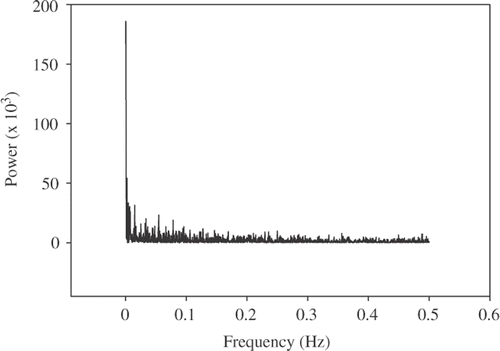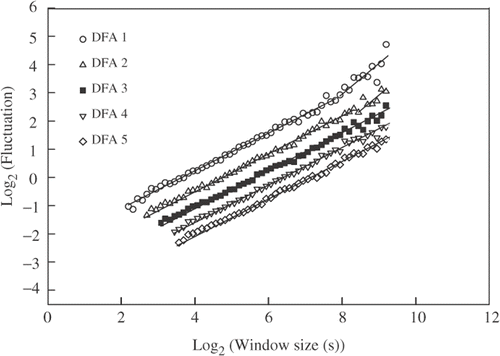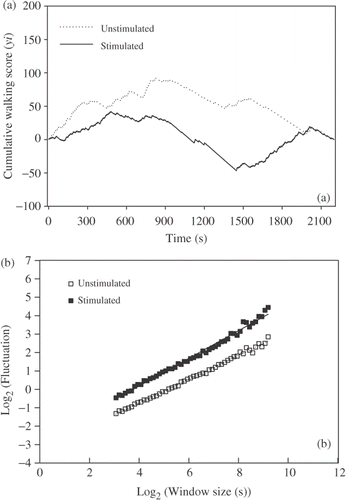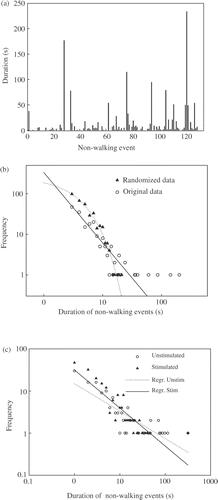Figures & data
Figure 1. Example of a power spectrum analyses of the original time series data. All data time series showed similar patterns.

Figure 2. Example of trend elimination capability of DFA in time series using linear (DFA1), quadratic (DFA2), cubic (DFA3), fourth order (DFA4) and fifth order (DFA5) DFA. For DFA1 and DFA2 a crossover is observed (change in slope) that is not present with DFA3, DFA4 and DFA5. DFA3 (▪) was selected for group comparisons, given that third order polynomials eliminated trends in data. In order to improve visualisation, the functions were shifted vertically by multiples of 0·3.

Figure 3. (a) Example of two cumulative walking time series. (b) Detrended Fluctuation Analyses for the same series presented in (a). The series corresponded to the examples of the Unstimulated and Stimulated groups and are characterized by the equations, y = 0·77x – 2·95 (R 2 = 0·99) and y = 0·67x −3·49 (R 2 = 0·99), respectively.

Figure 4. (a) Example of successive non-walking periods (events) and their time duration (s). Many large events are visible. (b) Example of log–log plot of the frequency distribution of non-walking events of a given duration, original and randomized time series are presented. Notice that the original time series shows a power law distribution (straight line) while the randomized time series has an exponential distribution (dotted line). (c) Examples of logã–log plots of the frequency of the duration of non-walking events in the Unstimulated and Stimulated groups. Reg. Stim. and Reg. Unstim. represent the regression line for Stimulated and Unstimulated birds, respectively.
